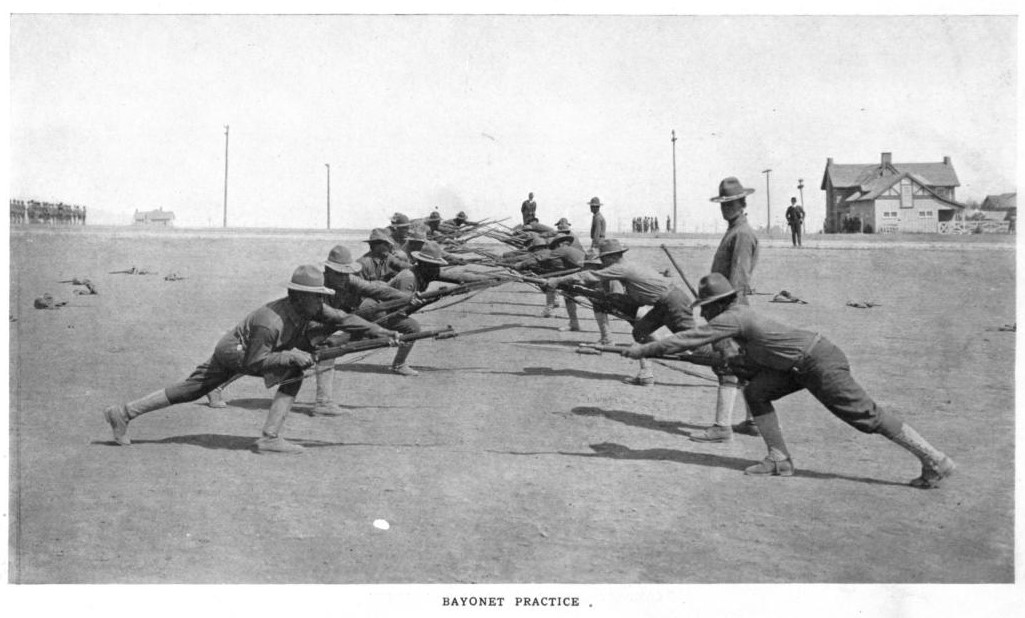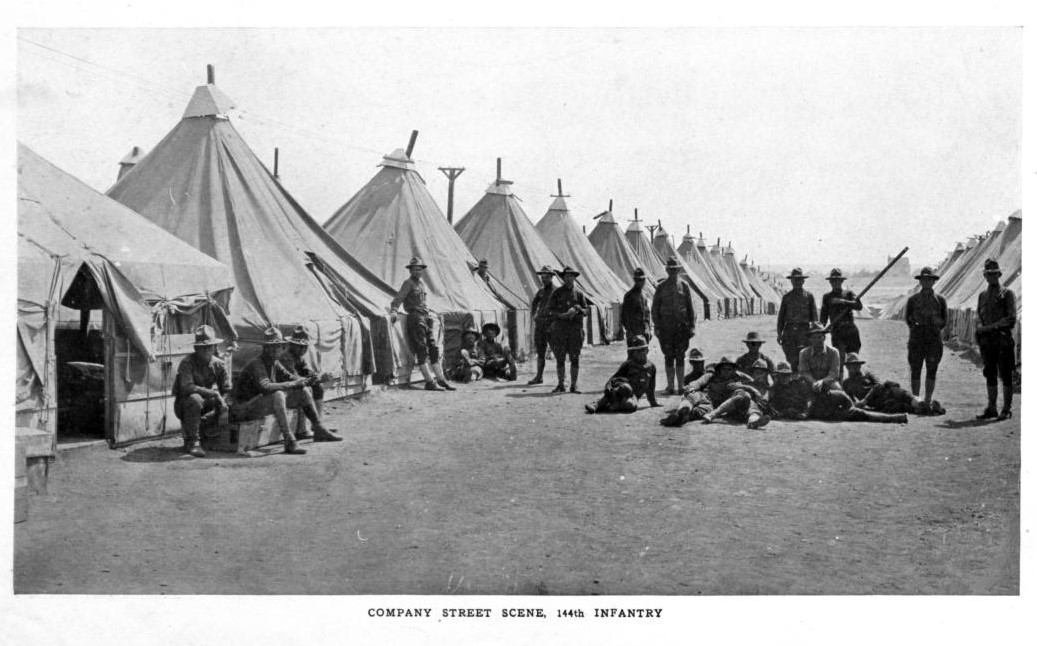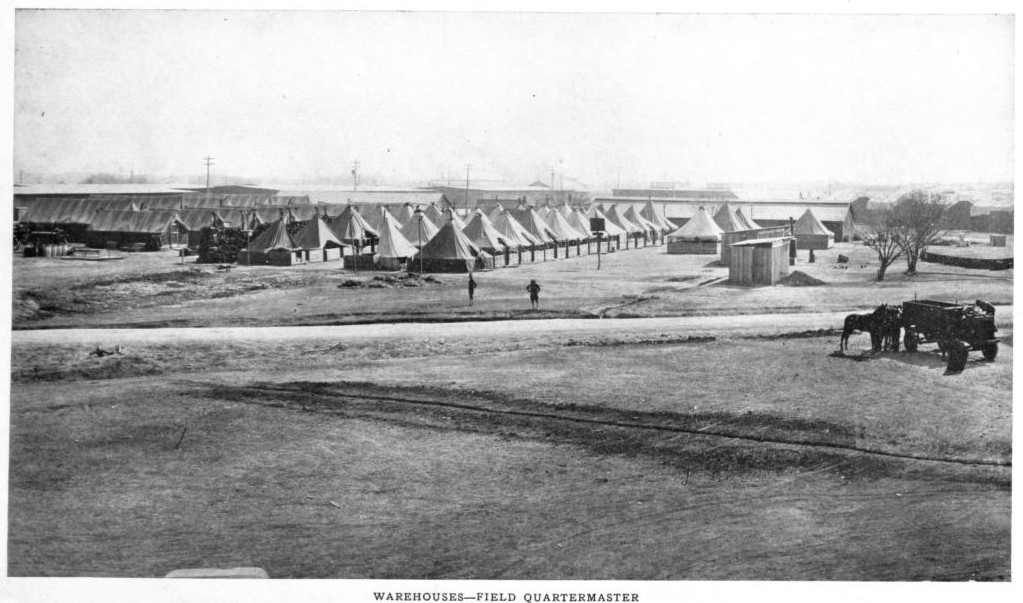In the Great War the United States Army was actually two armies. The Regular Army represented the permanent U.S. Army. In the 48 states, the largest part of it was the Coastal Artillery Corps. Another large part of the Regular Army was the Cavalry. Many of the seventeen U. S. Cavalry regiments were used to protect the border with Mexico.
The Regular Army also had infantrymen. Through the first half of 1916, there were thirty-one infantry regiments. A regiment at that time had about 1,550 men. The thirty-one regiments served in the four military departments in the United States plus overseas in Hawaii, the Philippines, China, Puerto Rico and the Panama Canal Zone. Likewise in January 1917, the United States purchased St. Thomas, St. John and St. Croix in the Virgin Islands and had to defend those as well.
The National Defense Act of 1916 added seven more infantry regiments to the Regular Army. When war with Germany was declared in April 1917 the U.S. Army had about 213,000 men in active service. This included 66,594 National Guardsmen on the border with Mexico. That month twenty-seven more infantry regiments were planned for the Regular Army, bringing the number to sixty-five.
A New Kind of War
When it fought, the U.S. Army was fighting insurgents who operated in smaller numbers. A unit the size of the divisions manning the trenches of Europe had not been known in the U.S. military since the Civil War. When it studied the problem beginning in April 1917, the Army concluded that it would also need infantry divisions over there. Lots of them.

This is when the U.S. Army became two armies. The Regular Army was a professional army made of volunteers. Joining them would be a National Army of draftees. Men who had registered for the draft in the spring began to be inducted into service during the summer of 1917. These men would form a new but temporary citizen army whose job was to defeat Germany and then go home.
This new National Army would add seventeen new divisions. They would come from all parts of the United States. The seventeen divisions each began with a distinctive part of the country as its home base. For example one division, the 90th (National Army), drew its men from Texas and Oklahoma.
The National Guard
Somewhere in between the Regular Army and the National Army was the National Guard. Eighteen new Guard divisions were also created at the same time as the National Army. Guardsmen were not professional soldiers, as they enlisted for the duration of the war with Germany. However they were volunteers; and some of them had previous experience in the military. Many of the Guardsmen had been in Federal service guarding the border with Mexico, but most were brand new recruits. Moreover, the vast majority of these were young and single.
News of a Texas National Guard division had been circulating since early April 1917. By June, the Texas Adjutant General was ordered by Washington to recruit to war strength three existing and four new infantry regiments. In July President Woodrow Wilson signed an order drafting all of the National Guard into Federal service for the duration of the war. That order would take effect on August 5, 1917. The eighteen new National Guard divisions would be numbered, instead of named after their home states.
Consequently, the Texas National Guard became the 36th Infantry Division on August 5, 1917.
Camp Bowie
Seventeen new National Army and eighteen new National Guard divisions would need thirty-five new training camps. The camps for the National Guard divisions were nearly all located in the Southern and Western departments of the Army. The idea was that these locations would have a milder winter to allow for faster training. Locating the training camps was in the power of the commander of the relevant department.
Realizing the potential for development that a military city could provide, Fort Worth Mayor W.D. Davis and some leading men in the city wrote a proposal for the Army. Fort Worth was an important rail transportation hub in 1917 with a population of about 95,000. Fort Worth was also in the beef business with stockyards and massive meat packing facilities. Horses and mules were also transported from Fort Worth to the world. For example, France and Britain were customers. The climate had already brought the Royal Flying Corps to settle in Fort Worth to train pilots.
Through the ministrations of the city government, business leaders, and a little southern charm, Fort Worth made the case for hosting a major training facility. Each training camp would be a small city in its own right; over 40,000 inhabitants all on the payroll of Uncle Sam. As a result, Fort Worth’s proposal was convincing. The city’s Arlington Heights neighborhood was selected as one of thirty-five new training camps for the Army on June 11th, 1917. The facility was named after Col. Jim Bowie, Texas pioneer and hero of The Alamo.
(More about Camp Bowie can be found here)


